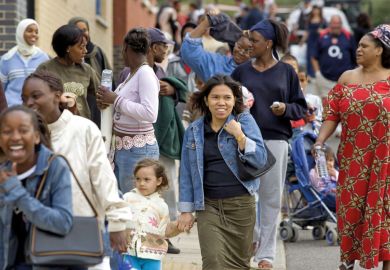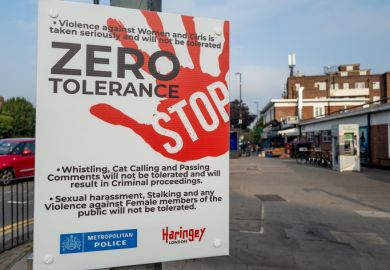I was appointed professor in early childhood development at the age of 33 – a world record for a female academic from eastern Europe. Looking back, there was a lot of personal fulfilment but also sacrifice on my journey to the top. I experienced both the cumulative benefits of being a successful academic and the disadvantages of being a member of marginalised groups.
After I completed my fellowship at the Harvard Graduate School of Education, for instance, a cascade of increasing advantages followed. Dining at High Table, with fellows from multiple disciplines and backgrounds, boosted my confidence to apply for ambitious grants. My network of top-calibre scholars increased and doors began opening for me.
Equally, two aspects of my identity – being a woman, and being from an eastern European background – have sometimes counted against me. For example, when I moved to a Norwegian university, I knew I had to learn Norwegian fast – just as I had to learn English fast when I moved to the UK from Slovakia. I have spent many evenings learning academic expressions and today publish in both languages. But I still get strong headaches after a day of work meetings in English and Norwegian and evening calls with my family in Slovakia. I see my multiple languages as a strength, but also as a form of exclusion that I want to contest.
Sometimes it’s small things that can make you feel left out. One example is idioms. Academics love talking in metaphors and sayings, but these are hard to understand for non-native speakers, hampering their ability not only to appreciate jokes at departmental meetings but also to understand what is being proposed. When one British professor told me I should use an article’s insights but not throw the baby out with the bathwater, I thought he meant that there was something wrong with the babies we had studied.
Nor were idioms taught on the Level 1 Norwegian course the university paid for me to attend. Luckily, I found a great YouTube language course for immigrants (and I tipped off the international office about it).
For academics exhibiting several of the “AGED” characteristics of discrimination (age, gender, ethnicity and disability), the disadvantage is especially severe. For instance, a body of evidence shows that academic women are doubly disadvantaged if they are transgender, non-native speakers, first generation, working class or from a non-white ethnic background. That evidence includes my new book, Inspirational Women in Academia: Supporting Careers and Improving Minority Representation, co-authored with Loleta Fahad. One of the key themes to emerge from our interviews with top-performing academics at US and UK institutions is that academia has a serious problem with accommodating these so-called intersecting identities.
We describe how members of these marginalised groups, traditionally excluded from the academic environment, find it extra difficult to navigate universities’ “hidden curriculum”: the implicit and unofficial structures that feed into academic development and performance. We also set out how higher education institutions use promotion metrics that hold back those with intersecting identities – who often overcompensate, resulting in greater burnout rates.
Some of the disadvantage is baked into academic culture. For example, mothers are doubly disadvantaged when important meetings are held after school pick-up hours or conferences are arranged in school holiday months. But further disadvantage is created when, however well-meaningly, people with intersectional identities are overburdened by expectations that they should help those in a similar position.
I am regularly asked to mentor other women from eastern Europe, both by my superiors and by the women themselves. The number of mentorship requests on my desk is naturally higher than for other professors, but fulfilling them all takes time away from writing papers and grants and from practice work – the activities that got me to my position in the first place. I want to give something back and support scholars whose marginalised backgrounds reflect my own, but my willingness should not be taken as a matter of course.
In fact, someone with a similar intersecting identity to yours is not necessarily your best career coach. Diverse mentors at various career stages could provide greater career insights and sustainable support. One of the female professors we interviewed described how various male mentors taught her efficient time-saving techniques and boosted her confidence, both as an academic and as a mother.
Other one-size-fits-all approaches to disadvantage are also suboptimal. For instance, while generic empowerment courses, such as “women-only clubs”, might work in the corporate world, they do not suit academia, where people need to know how to write, advocate, lead, teach and administer: all very different skills. Strategic, short and specific training options can be more effective.
Moreover, not all women face the same barriers. An intersectional lens reminds us that to tackle discrimination, we need to support diverse identities in academia. It is both a blessing and a curse to wear several hats, but that is who we are, both as academics and people. Universities need to support this by showing genuine interest in our lives outside academia and creating structures that support us as whole people.
Natalia Kucirkova is professor of reading and children’s development at the Open University and professor of early childhood education and development at the University of Stavanger, Norway.
Register to continue
Why register?
- Registration is free and only takes a moment
- Once registered, you can read 3 articles a month
- Sign up for our newsletter
Subscribe
Or subscribe for unlimited access to:
- Unlimited access to news, views, insights & reviews
- Digital editions
- Digital access to THE’s university and college rankings analysis
Already registered or a current subscriber?








